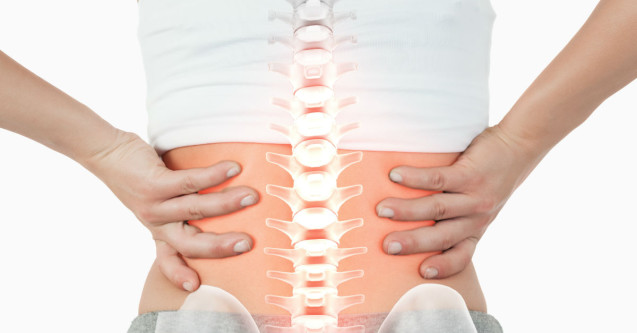Posture problem and foot problem : Is there a link?
There are multiple causes of posture problems and the misalignment of our bodies. Structural foot problems are crucial to these postural issues. An unbalanced foot can cause instability in other foot structures, in ankle structures as well as the knee, hip and back structures. As a result, a foot instability has a direct correlation with postural issues and the structural complications of our body.
An abnormal foot causing postural problems in other foot structures
Foot structure is tightly linked by strong ligaments. These rigid ligaments are often tough. Consequently, a change in the forefoot structure will have an impact on surrounding tissue and on the rear-foot composition.
For instance, hallux valgus or ‘bunion’ is a tissue change surrounding the big toe joint. Under these circumstances, the alignment of the big toe is not optimal for weight absorption. Instead, the body force is transmitted to foot arch.
With the repetitive transmission of these forces, the structures begin to weaken. The result is an inflammation of the most important of arch structures: the plantar fascia. Plantar fasciitis is associated with pain and burning in the arch of the foot.
With a change in the orientation of the big toe joint associated with hallux valgus, the state of the plantar fascia is compromised. This inflammation of the plantar fascia alters the patient’s gait pattern and this pain brings about a posture problem.
An abnormal foot causing postural problems in the ankle
There are numerous muscles and tendons around the ankle. These muscles are principally attached to the tibia or lower leg bone. After crossing the ankle joint, these muscles are anchored to the small bones of the foot.
Consequently, an alteration in foot structure will have an impact on the line of force of these tendons. The muscles and tendons will work to stabilize the altered foot position. The repeated effort of these muscles and tendons crossing the ankle will lead to inflammation or tendonitis.
For instance, a lowering of the plantar arch is associated with flat feet. As a result, the posterior tibial tendon, responsible for maintaining the arch in its optimal position, fatigues. Posterior tibial tendonitis is thus inevitable.
Flat feet, associated with a lower foot arch, are at the source of structural changes in the ankle, including inflammation of the posterior tibial tendon. The end result is a postural problem that affects the patient’s way of walking.
An abnormal foot causing postural problems within the knee
The tibia is the most important bone of the lower leg. The connection between the talus bone of the foot and the tibia is extremely solid. Consequently, any movement of the talus bone will also change the position of the tibia.
The tibia is equally important in the knee joint. The tibia participates in flexion and extension of the knee. As a result, foot movement that includes the talus, will also indirectly change the position of the knee.
For example, flat feet are linked to lower plantar arches. The talus is one of the bones in the arch. The talus is also lower to the ground in flat feet. The descent of the talus forces an internal rotation of the part of the tibia that is closer to the foot. This internal rotation is then equally felt at the knee level. The result is a stretching of the ligaments and muscles at the inside part of the knee. The inflammation of these structure alters the patient’s walking pattern.
With the fundamental connection of the tibia between the foot and the knee, an unbalanced foot can be at the origin of postural issues concerning the knee.
An abnormal foot causing postural problems within the hip
The femur is an instrumental bone of the hip and knee. Consequently, any change in femur position will alter the hip the hip and knee position and vice-versa.
For example, high-arch feet are associated curved and rigid arches. These patients walk more so on the outside or lateral part of their feet. This external foot position forces the knee out as well. Due to its close relationship with the knee, the femur moves externally. This external femur position compresses the femur at the hip joint.
With the fundamental connection of the tibia between the foot and the knee, as well as the important connection of the femur between the knee and hip, an unbalanced foot can indirectly be at the origin of postural hip problems.
An abnormal foot causing postural problems at the back level
Shock absorption is an important role of our feet. Our feet react like springs to smoothly accept our body weight.
Flat feet and high-arch feet have a decreased ability to play this role of body weight shock absorption. If this force is not absorbed at the foot level, other structures step in to play this role.
Due to the bony connections between the feet and our backs, the line of force from our body weight terminates at the back level. If the back is misaligned or if the back structures are worn down, shock absorption is less than optimal and the back becomes susceptible to injury.
Without the shock absorption ability of the foot absent in the case of flat or high-arched feet, our body weight can easily be transmitted to the back. Should the back structure itself be abnormal, a posture problem occurs.
Our feet have important connections with our ankles, knees, hips and back; there is a direct link between postural problems and foot disorders. As a result, an unbalanced foot can often cause symptoms in the lower extremity and back. With an optimal correction of the foot, we can limit the possible complications of the these other structures. Orthotics are the ideal solution to correct your feet. Consult a podiatrist for a complete foot exam!


